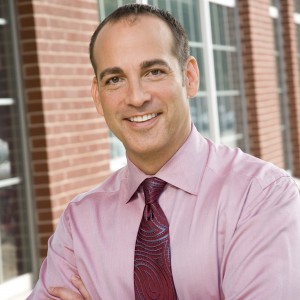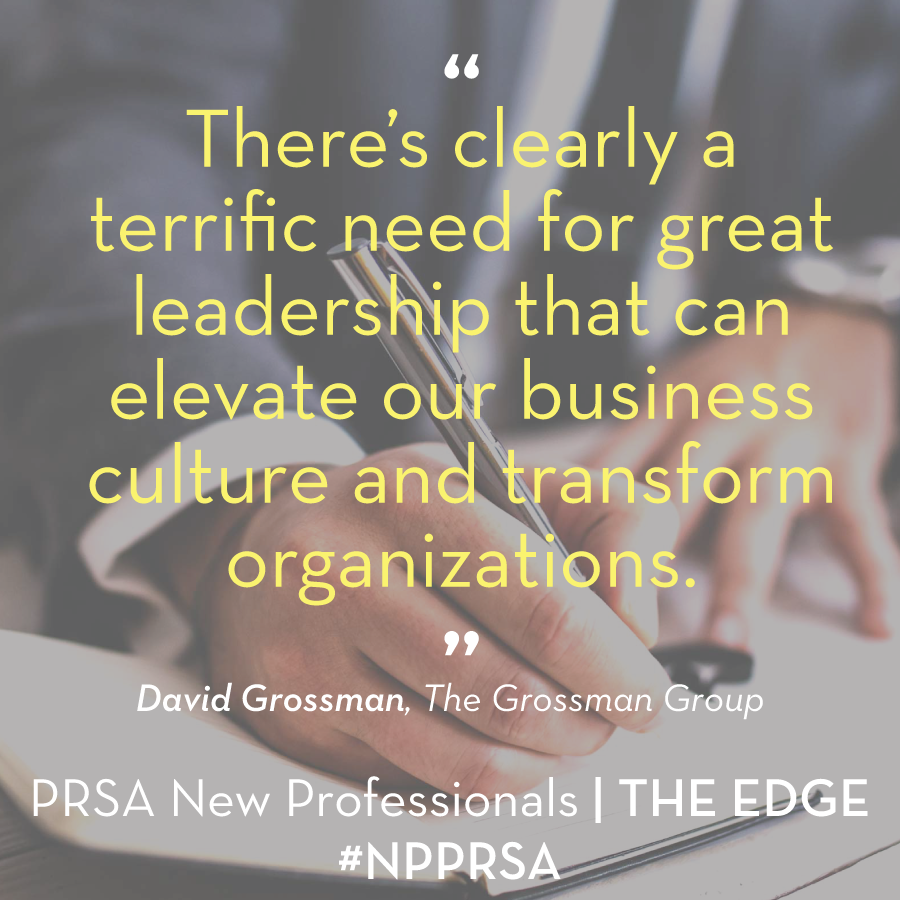Editor’s Note: This is guest blog #2 of three that David Grossman will be contributing. Stay tuned for the final part of the series this spring.
What is the Key to Great Leadership Today?
The question of what it takes to be a great leader is a fascinating one, a point made abundantly clear from the recent responses I received to the question following my last post. I challenged readers to give me their best insights on great leadership, and they delivered!
Everything you shared was insightful, including the need for leaders to go out of their way to connect with their teams, to inspire, to be transparent, to have humility, to challenge the status quo and to encourage different points of view.
You also talked about understanding and valuing the important role that each individual plays toward achieving an organization’s goals. To that end, great leaders have a mindset that everyone on the team is a leader. They help everyone develop their leadership skills so they’re ready, willing and able when it’s their chance to lead.
Just consider the annual scene of geese flying south for the winter. It’s then, when the geese are searching for a warmer climate, that we see the flying-V formation overhead. What’s particularly interesting is that the goose at the apex of the V might be considered the leader. They set the course, lead the way and deal with the most wind in their face.
But that’s only for a time. When the lead goose tires, he or she moves back to the end of the line. Then, a new goose becomes the leader – setting the course, leading the way, and dealing with the most wind in their face.
In business today, organizations need a similar formation, with everyone leading regardless of whether they manage people or not. And that means everyone needs to be ready to lead when it’s their turn.
Once leaders can foster this kind of mentality in an organization, they help ensure accountability. If everyone sees themselves as leaders, no one feels comfortable straying from the ethical standards and values that the company promises to live by.
In my view, that’s one of the most important keys to great leadership.
In my next and last post in this leadership series, I’ll offer some critical tips for how to lead in an authentic way – one that’s motivational and inspirational, as well as is true to who you are.
In the meantime, I’m interested in your thoughts:
In what ways could your organization better help everyone to be a leader?
 David Grossman, ABC, APR, Fellow PRSA is both a teacher and student of effective leadership and communication and helps leaders drive productivity and get the results they want through authentic and courageous leadership communication. He’s a sought-after speaker and advisor to Fortune 500 leaders. A three-time author, David is CEO of The Grossman Group, an award-winning Chicago-based strategic leadership development and internal communication consultancy; clients include: Hill-Rom, Eastman Chemical Company, Kimberly-Clark, McDonald’s and Motel 6, to name a few. His newest book, “No Cape Needed: The Simplest, Smartest, Fastest Steps to Improve How You Communicate by Leaps and Bounds,” was published in the fall of 2015 and recently won the Pinnacle Book Award for the “Best in Business” category. In addition, David teaches Internal Engagement at Columbia University, in New York City. To connect with David you can find him on LinkedIn and Twitter.
David Grossman, ABC, APR, Fellow PRSA is both a teacher and student of effective leadership and communication and helps leaders drive productivity and get the results they want through authentic and courageous leadership communication. He’s a sought-after speaker and advisor to Fortune 500 leaders. A three-time author, David is CEO of The Grossman Group, an award-winning Chicago-based strategic leadership development and internal communication consultancy; clients include: Hill-Rom, Eastman Chemical Company, Kimberly-Clark, McDonald’s and Motel 6, to name a few. His newest book, “No Cape Needed: The Simplest, Smartest, Fastest Steps to Improve How You Communicate by Leaps and Bounds,” was published in the fall of 2015 and recently won the Pinnacle Book Award for the “Best in Business” category. In addition, David teaches Internal Engagement at Columbia University, in New York City. To connect with David you can find him on LinkedIn and Twitter.


